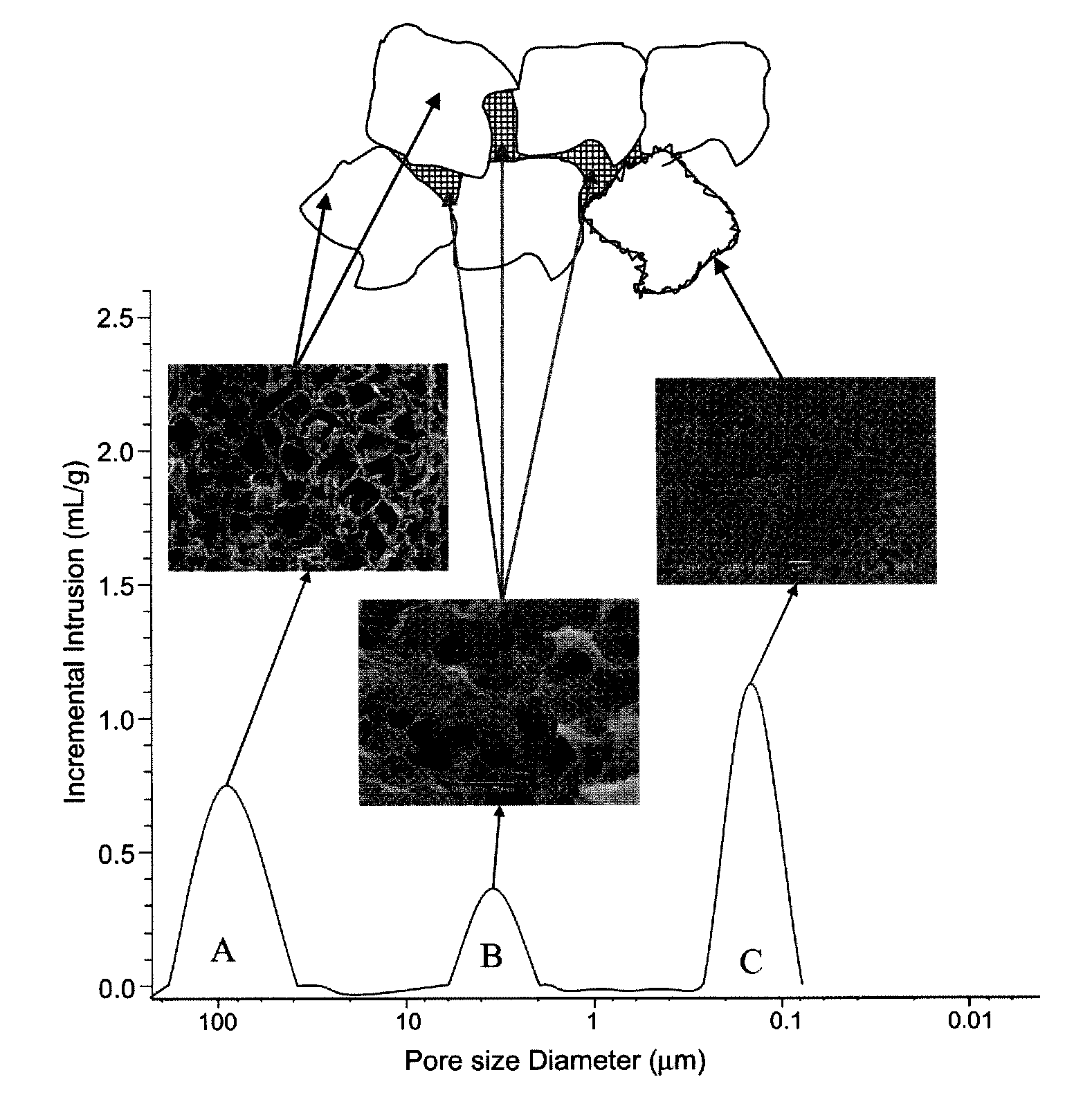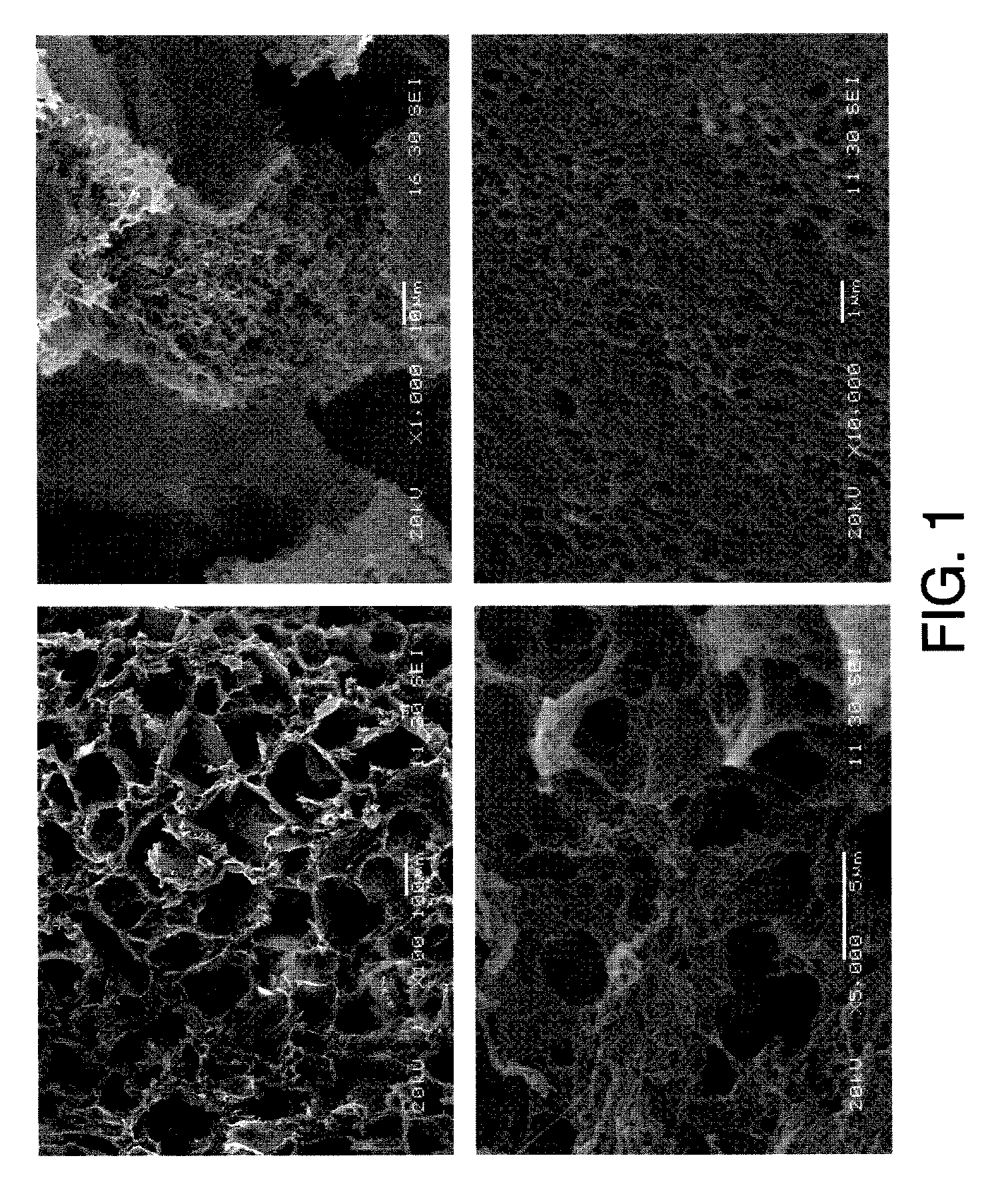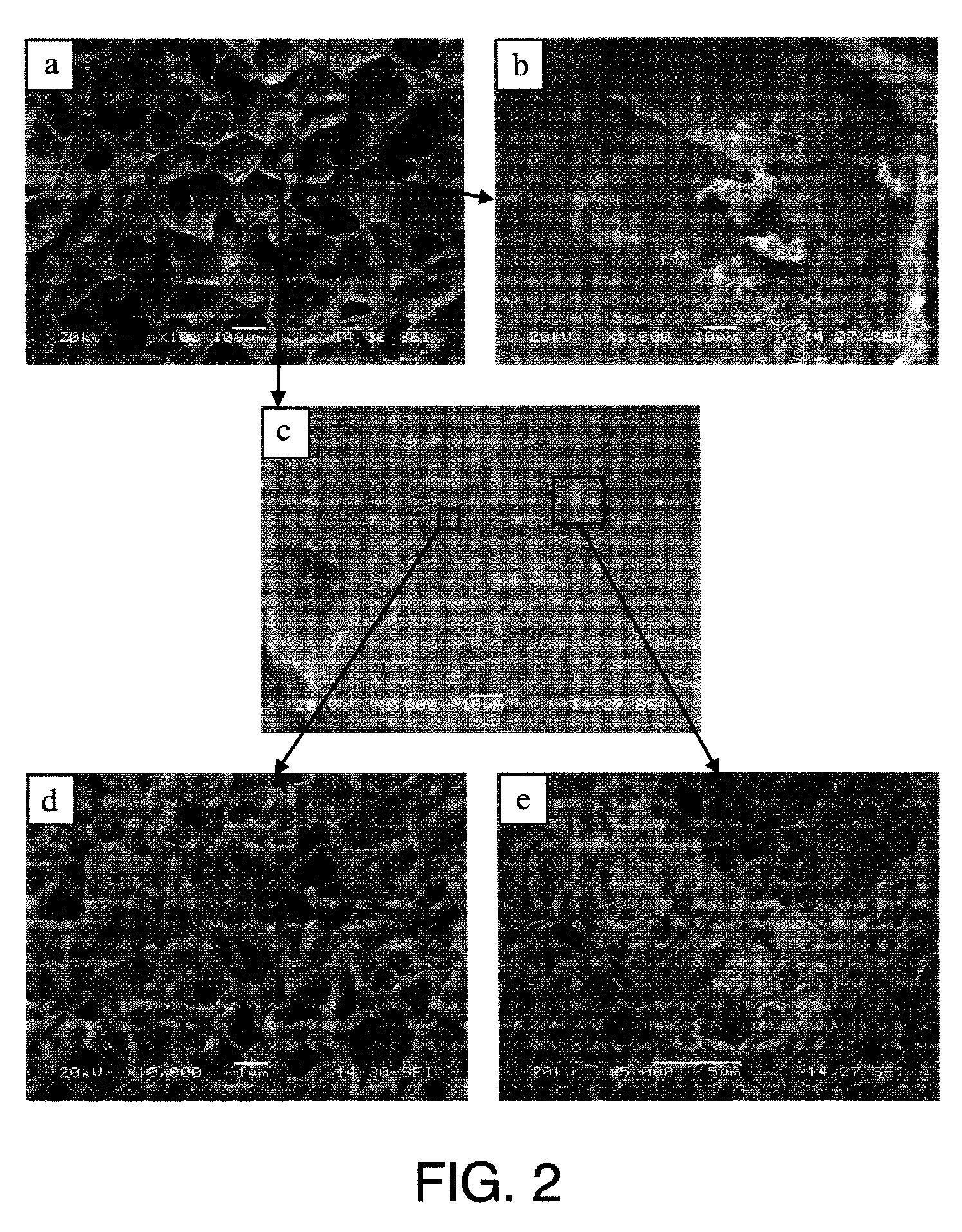Porous peek article as an implant
a peek article and porous technology, applied in the field of new porous peek type articles, can solve the problems of inability to use scaffolds in other applications, inability to resembling bone structures, and inability to facilitate the integration of peek materials
- Summary
- Abstract
- Description
- Claims
- Application Information
AI Technical Summary
Problems solved by technology
Method used
Image
Examples
example 1
[0081]Firstly, sodium chloride (Sigma Aldrich) particles of size between 80-120 μm were sifted with standard sieves and collected to obtain the desired sizes.
[0082]Next, 800 mg of polyetheretherketone (PEEK) (VESTAKEEP, LATI) and 3200 mg of benzophenone (BF) (Panreac) were added into a 10 mL glass vial. N2 was bubbled into the vial for 5 min. and then the vial was sealed with a screw cap. The glass vial was introduced in an oil bath and heated up to 285° C. The mixture was vigorously stirred until PEEK completely dissolved in BF, forming a homogeneous and transparent solution. Once the polymer was dissolved, 2 g of sieved salt particles were added to the PEEK / BF solution and the dispersion was maintained under stirring at 285° C. for 30 minutes.
[0083]After this process, the glass vial was removed from the oil bath and maintained at room temperature overnight without stirring. The solidified PEEK / BF / salt intermediate was immersed in 50 mL ethanol on a shaker at 100 r.p.m. at room tem...
example 2
[0087]Firstly, sodium chloride (Sigma Aldrich) particles of size between 120-180 μm were sifted with standard sieves and collected to obtain the desired sizes. Next, 80 mg of hydroxyapatite (HA) (Plasma Biotal) and 3200 mg of benzophenone (BF) (Panreac) were added into a 10 mL glass vial, N2 was bubbled into the vial for 5 min. and then the vial was sealed with a screw cap and the mixture was sonicated at 60° C. for 30 minutes. Once the HA was dispersed in BF, 800 mg of polyetheretherketone (PEEK) (VESTAKEEP, LATI) was added and the glass vial was transferred to an oil bath and heated at 285° C. The mixture was vigorously stirred until PEEK was completely dissolved. When the polymer was dissolved, 2 g of sieved salt particles were added to the PEEK / HA / BF dispersion and the solution was maintained under stirring at 285° C. for 30 minutes.
[0088]After this process, the glass vial was removed from the oil bath and maintained at room temperature overnight without stirring. The solidified...
example 3
[0094]Firstly, sodium chloride (Sigma Aldrich) particles of size between 80-120 μm were sifted with standard sieves and collected to obtain the desired sizes.
[0095]Next, 400 mg of polyetheretherketone (PEEK) (VESTAKEEP, LATI) and 3600 mg of pentafluorophenol (PF) (Panreac) were added into a 10 mL glass vial. N2 was bubbled into the vial for 5 min. and then the vial was sealed with a screw cap. The glass vial was introduced in an oil bath and heated up to 150° C. The mixture was vigorously stirred until PEEK completely dissolved in PF, forming a homogeneous and transparent solution. Once the polymer was dissolved, 2 g of sieved salt particles were added to the PEEK / PF solution and the dispersion was maintained under stirring at 150° C. for 30 minutes.
[0096]After this process, the glass vial was removed from the oil bath and maintained at room temperature overnight without stirring. The solidified PEEK / PF / salt intermediate was immersed in 50 mL distilled water on a shaker at 100 r.p.m...
PUM
| Property | Measurement | Unit |
|---|---|---|
| size | aaaaa | aaaaa |
| size | aaaaa | aaaaa |
| size | aaaaa | aaaaa |
Abstract
Description
Claims
Application Information
 Login to View More
Login to View More - R&D
- Intellectual Property
- Life Sciences
- Materials
- Tech Scout
- Unparalleled Data Quality
- Higher Quality Content
- 60% Fewer Hallucinations
Browse by: Latest US Patents, China's latest patents, Technical Efficacy Thesaurus, Application Domain, Technology Topic, Popular Technical Reports.
© 2025 PatSnap. All rights reserved.Legal|Privacy policy|Modern Slavery Act Transparency Statement|Sitemap|About US| Contact US: help@patsnap.com



